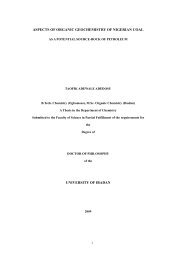View/Open - TWAS & OWSD Thesis Repository Home
View/Open - TWAS & OWSD Thesis Repository Home
View/Open - TWAS & OWSD Thesis Repository Home
You also want an ePaper? Increase the reach of your titles
YUMPU automatically turns print PDFs into web optimized ePapers that Google loves.
elationship between the prevalence of DEN IgM and the seasons of the year wasobserved in this study with the highest during the rainy season (1.3%) compared todry (0%,) and culd harmatrun season (0.3%) ill Sahel savanna zone in 2001 Table 11and figure 4 displays the di fference. This findillg compared Iavorably with the reportof Moore et al. (1975) who revealed thar arboviral activity was highest during t1]1~rainy season with the peak in the month or .Junc, July and August and lowest in thedry month of January and February, in Nigeria. In addition, Akhtar and Ebi (200])reported that DEN transmission occurs year round in tropical arC3S but has seasonalpeaks in most countries during the months with high rainfall and humidity. ;\ reportshowed that the bulk of the yearly rainfall [nvt-r 90%) in Maiduguri, the study area,is concentrated between the months of June and September (Gimand Associates,2002). That report f1lJ1hcr stated I hat t hc montl: 0 fA ugust marks the peak 0 f therainy season with the mean rainfall amount of 21J5.9mm. In addition, these authorsreported that, the months ofJuly to September in the study area are associated withhigh relative humidity of more than 60%. This implies that the month ofJuly duringwhich the highest prevalence rate of DEN Igl'v1 was obtained had high rainfall am;relative humidity in conformation with Gimand Associates' (2002) report. It hasbeen determined that warmer temperatures reduce larval size of Ae. Aegypti, andthis usually result in a smaller adult size (Reuda, 1990). Smaller adult femalemosquitoes have been found to feed more frequently to nourish the developing eggs(Reita, 1988), which increase the possibility of transmission. The positiverelationship between biting rates and temperature has been supported in field studiesin Bangkok. A second consideration in DEN virus transmission is the report that theextrinsic incubation period for Adese Aegvpu decreased from twelve to scven dayswhen mosquitoes were kept at 32-35"C instead of 30"e (Watts et 01.. 1987).Koopman et 01. (1991) therefore concluded that median temperature during the rainyseason was the strongest predictor of DEN infection. Other authors's reports arguedthat temperature affects the rate of mosquito larval development, adult survival,vector size and gonotrophic cycle as well as the extrinsic incubation period of thevirus in the vector (Focks et. ai, 1993). In contrast to that report, Akhtar and Ebi(2001) showed that transmission intensity for dengue VIruses in tropical endemiccountries is limited primarily by herd immunity but not temperature. These authorstherefore postulated that temperature increase is not likely to affect transmissionsignificantly. This finding compared favorablv with the report of Moore et aI.,147..--------------~~~-- -------


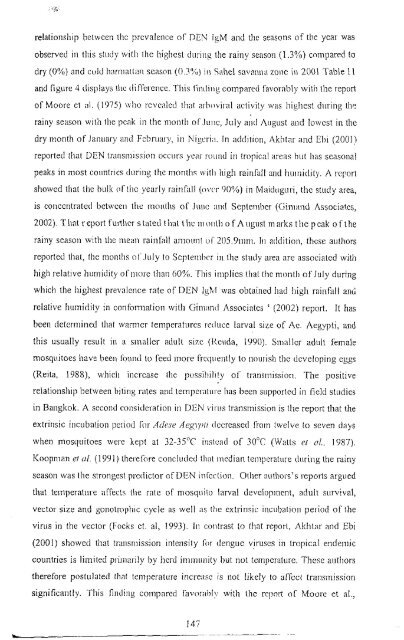

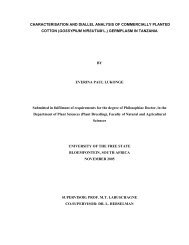

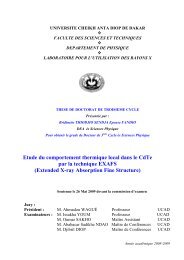
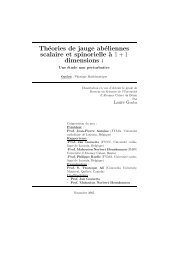
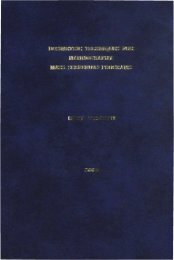

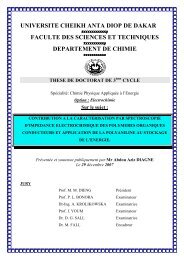
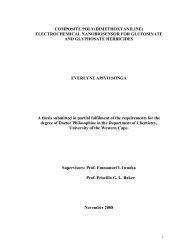


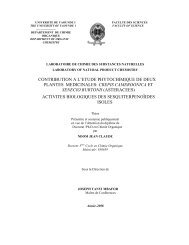
![SYNTHESIS AND ANTI-HIV ACTIVITY OF [d4U]-SPACER-[HI-236 ...](https://img.yumpu.com/30883288/1/190x245/synthesis-and-anti-hiv-activity-of-d4u-spacer-hi-236-.jpg?quality=85)
